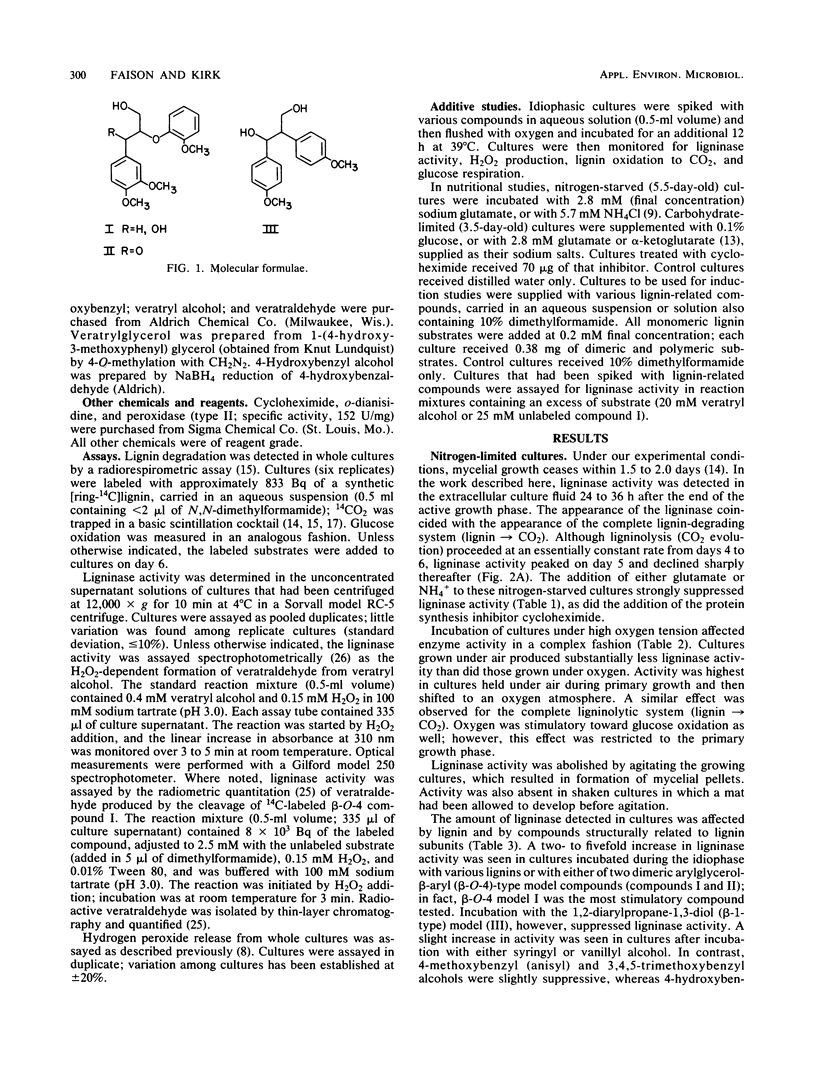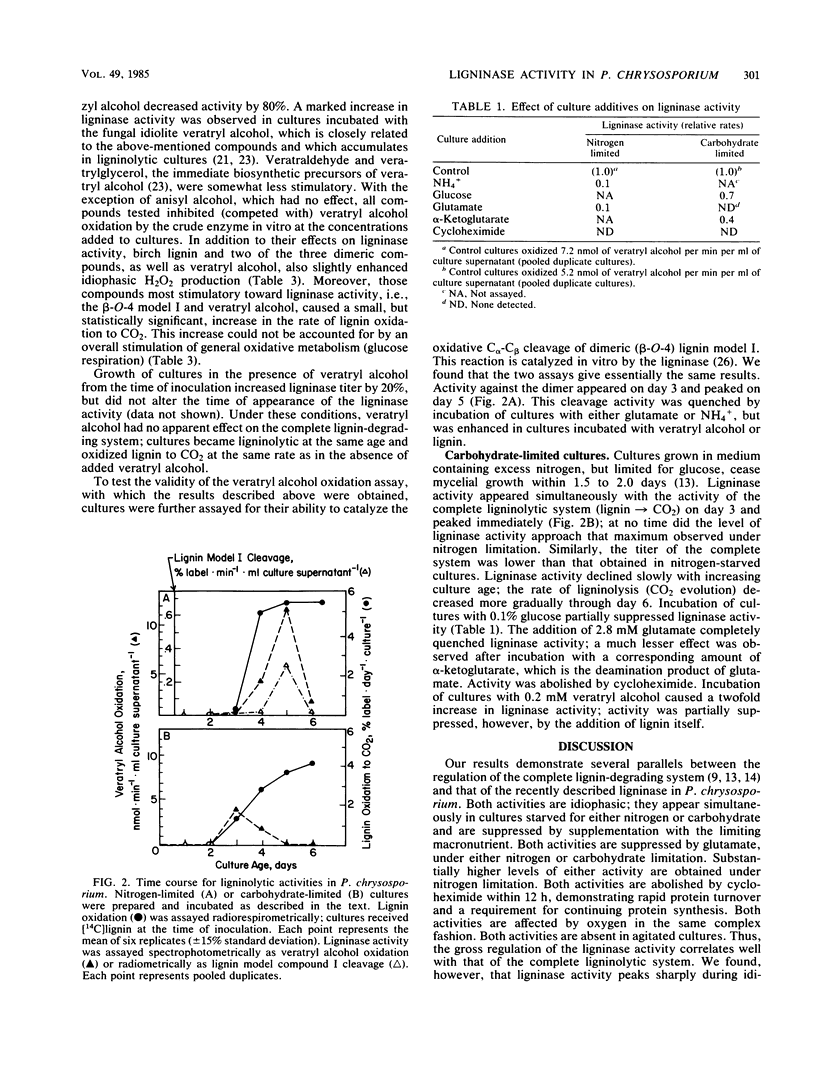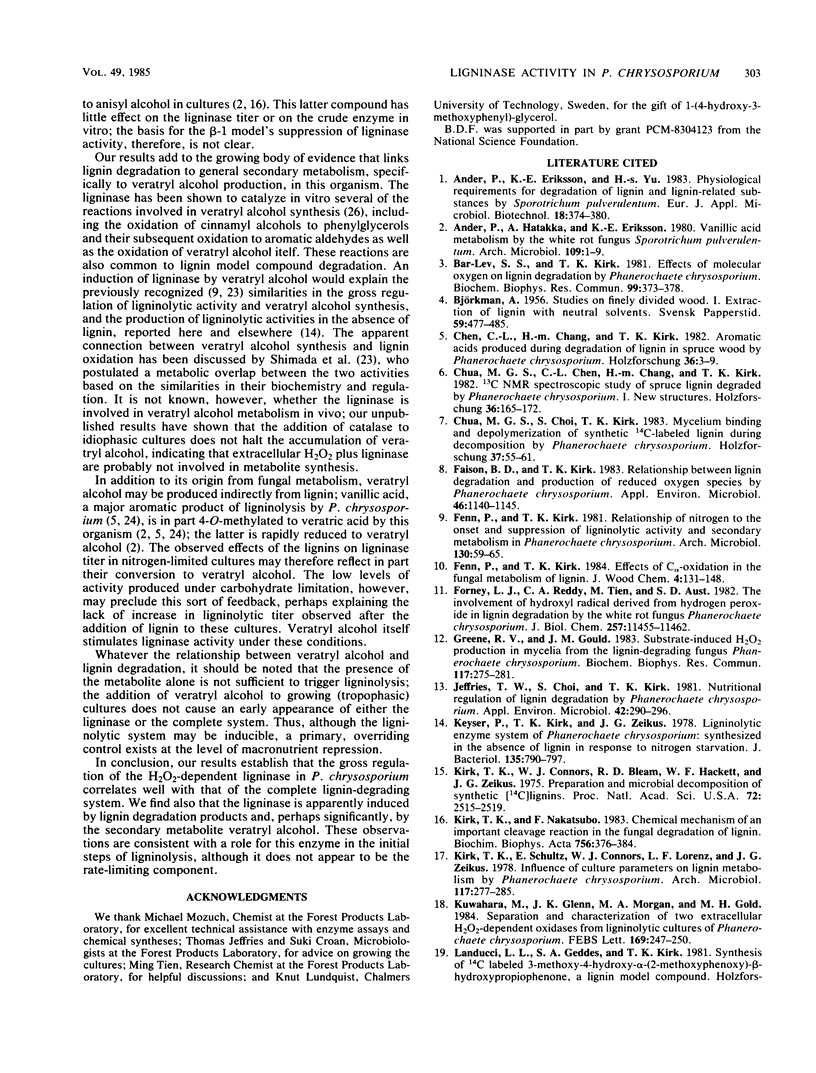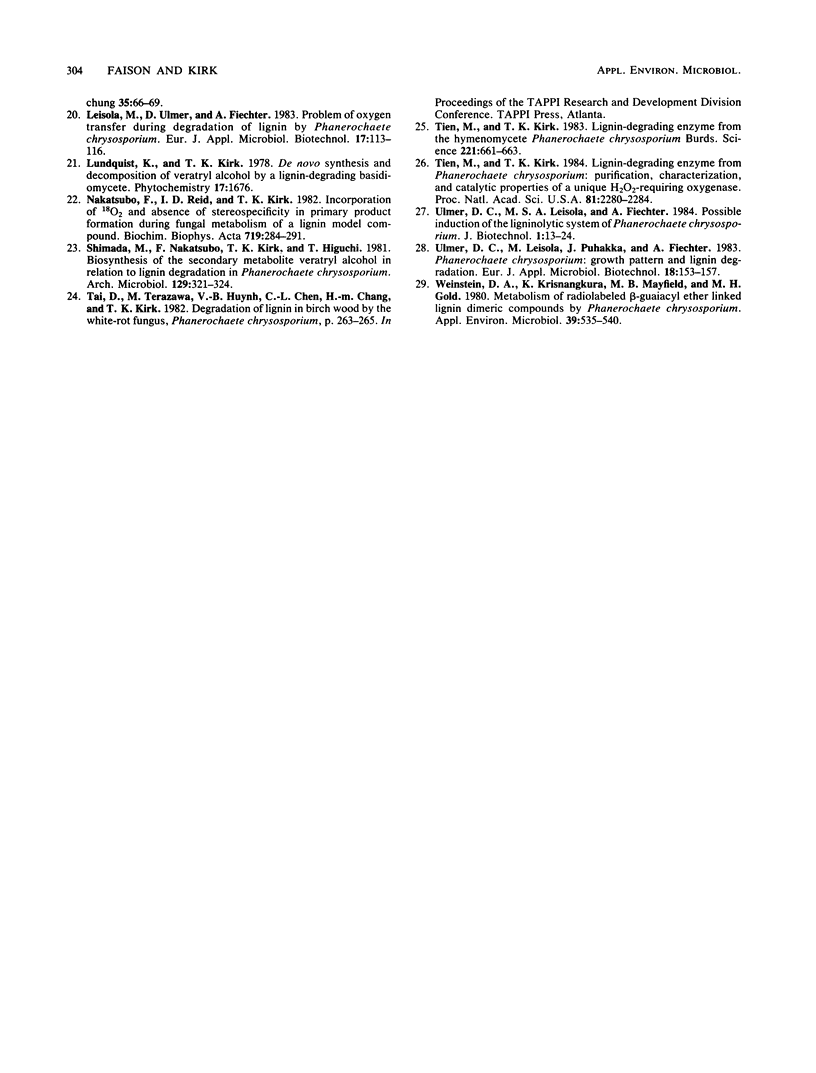Abstract
The regulation of an H2O2-dependent ligninolytic activity was examined in the wood decay fungus Phanerochaete chrysosporium. The ligninase appears in cultures upon limitation for nitrogen or carbohydrate and is suppressed by excess nutrients, by cycloheximide, or by culture agitation. Activity is increased by idiophasic exposure of cultures to 100% O2. Elevated levels of ligninase and, in some cases, of extracellular H2O2 production are detected after brief incubation of cultures with lignins or lignin substructure models, with the secondary metabolite veratryl alcohol, or with other related compounds. It is concluded that lignin degradation (lignin → CO2) by this organism is regulated in part at the level of the ligninase, which is apparently inducible by its substrates or their degradation products.
Full text
PDF





Selected References
These references are in PubMed. This may not be the complete list of references from this article.
- Bar-Lev S. S., Kirk T. K. Effects of molecular oxygen on lignin degradation by Phanerochaete chrysosporium. Biochem Biophys Res Commun. 1981 Mar 31;99(2):373–378. doi: 10.1016/0006-291x(81)91755-1. [DOI] [PubMed] [Google Scholar]
- Faison B. D., Kirk T. K. Relationship Between Lignin Degradation and Production of Reduced Oxygen Species by Phanerochaete chrysosporium. Appl Environ Microbiol. 1983 Nov;46(5):1140–1145. doi: 10.1128/aem.46.5.1140-1145.1983. [DOI] [PMC free article] [PubMed] [Google Scholar]
- Forney L. J., Reddy C. A., Tien M., Aust S. D. The involvement of hydroxyl radical derived from hydrogen peroxide in lignin degradation by the white rot fungus Phanerochaete chrysosporium. J Biol Chem. 1982 Oct 10;257(19):11455–11462. [PubMed] [Google Scholar]
- Greene R. V., Gould J. M. Substrate-induced H2O2 production in mycelia from the lignin-degrading fungus Phanerochaete chrysosporium. Biochem Biophys Res Commun. 1983 Nov 30;117(1):275–281. doi: 10.1016/0006-291x(83)91571-1. [DOI] [PubMed] [Google Scholar]
- Jeffries T. W., Choi S., Kirk T. K. Nutritional Regulation of Lignin Degradation by Phanerochaete chrysosporium. Appl Environ Microbiol. 1981 Aug;42(2):290–296. doi: 10.1128/aem.42.2.290-296.1981. [DOI] [PMC free article] [PubMed] [Google Scholar]
- Keyser P., Kirk T. K., Zeikus J. G. Ligninolytic enzyme system of Phanaerochaete chrysosporium: synthesized in the absence of lignin in response to nitrogen starvation. J Bacteriol. 1978 Sep;135(3):790–797. doi: 10.1128/jb.135.3.790-797.1978. [DOI] [PMC free article] [PubMed] [Google Scholar]
- Kirk T. K., Connors W. J., Bleam R. D., Hackett W. F., Zeikus J. G. Preparation and microbial decomposition of synthetic [14C]ligins. Proc Natl Acad Sci U S A. 1975 Jul;72(7):2515–2519. doi: 10.1073/pnas.72.7.2515. [DOI] [PMC free article] [PubMed] [Google Scholar]
- Tien M., Kirk T. K. Lignin-Degrading Enzyme from the Hymenomycete Phanerochaete chrysosporium Burds. Science. 1983 Aug 12;221(4611):661–663. doi: 10.1126/science.221.4611.661. [DOI] [PubMed] [Google Scholar]
- Tien M., Kirk T. K. Lignin-degrading enzyme from Phanerochaete chrysosporium: Purification, characterization, and catalytic properties of a unique H(2)O(2)-requiring oxygenase. Proc Natl Acad Sci U S A. 1984 Apr;81(8):2280–2284. doi: 10.1073/pnas.81.8.2280. [DOI] [PMC free article] [PubMed] [Google Scholar]
- Weinstein D. A., Krisnangkura K., Mayfield M. B., Gold M. H. Metabolism of Radiolabeled beta-Guaiacyl Ether-Linked Lignin Dimeric Compounds by Phanerochaete chrysosporium. Appl Environ Microbiol. 1980 Mar;39(3):535–540. doi: 10.1128/aem.39.3.535-540.1980. [DOI] [PMC free article] [PubMed] [Google Scholar]


